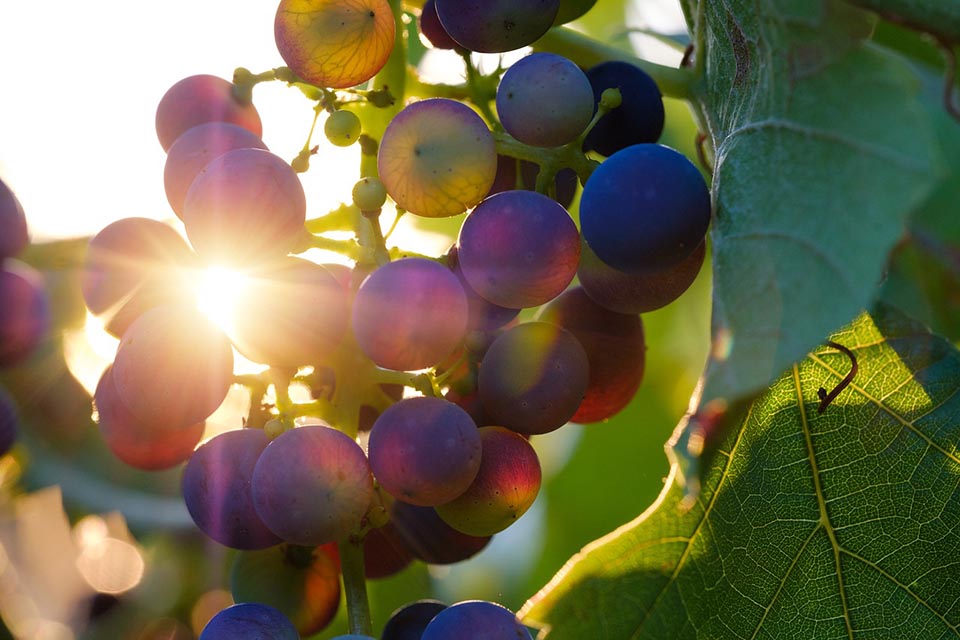
Only a few years ago, I was lamenting the profusion of high alcohol wines on the local supermarket shelves. One of the main reasons was that the wines available in Thailand were predominantly from Australia and Chile which are considered warm climates. Grapes grown in warmer regions tend to have higher sugar content because of the exposure to the sun, and during the fermentation process the most of the sugar is converted into alcohol. The more sugar there is in the grapes; the higher the alcohol in the wine. Climate change and higher temperatures have had a direct impact on the ripening of the grapes and the increased sugar content. I am slightly over-simplifying the issue here, but that’s the gist of it. Wines which are naturally low in alcohol tend to come from cooler countries where the grapes ripen to a lesser extent. In Germany’s Rhein and Mosel wine regions, they’ve been making high quality, low alcohol Rieslings for generations.
Last week, I read that Americans bought nearly 25 percent more wine last year. At the same time, there seems to be an increasing preference among consumers for wines that are lower in alcohol. This is a slow trend which began over ten years ago and seems to be continuing in Britain, Europe and America. But what exactly does “lower in alcohol” mean in real terms? Let’s try and sort it out.
The global standard for indicating alcohol content is alcohol by volume (ABV). This indicates the amount of ethanol (alcohol) in the liquid, expressed in terms of a percentage. Table wines range from an extremely low 5 percent ABV to a heady 15 percent, but you have to take the ABV with a pinch of salt. The wine in the bottle can legally be 1.5% higher or lower than the value shown on the label. This means of course that a bottle labeled 12.5% ABV could in reality be 14% which is almost at the top of the tree. Most table wines that you’ll encounter in the local supermarkets are in the average 10-12 percent range. The expression “lower in alcohol” is vague to say the least, but it’s generally taken to mean 10% ABV and lower.
You may well ask why wine needs to have alcohol at all. The answer is that alcohol occurs naturally in wine as the grape juice (or “must”) ferments. As any experienced bar-tender will tell you, alcohol delivers flavour. Because alcohol is “thicker” than water, it brings a sense of body and fullness to the liquid which otherwise wouldn’t be there. Wines with lower ABV levels are typically lighter in body and many wine experts believe that they are more food-friendly. They pair more readily with a wide range of dishes, including those tricky-to-match Asian spicy foods.
So why are so many people turning to low-alcohol wines? Well, much of the research has revealed that it’s because of the perceived health benefits, real or imagined. For one thing, low alcohol wines are slightly lower in calories. A small glass of wine at 13% ABV contains around 90 calories, whereas the same quantity of wine at 5.5% ABV contains only about 50 calories. It was also found that people preferred lower alcohol wines to lessen the intoxicating effects. Wine enthusiasts are more interested in the aromas and flavours of the wine and getting bombed is certainly not the intention. In some European countries low alcohol wines are subject to a tax break and can work out significantly cheaper.
But there’s a problem. The wine regulations in Europe and other wine producing regions state that wine is not wine if it contains less than 8.5% alcohol. Producers cannot use the word “wine” on the label and are obliged to use an expression like “wine-based beverage” or something similar. To get around the issue, these low-alcohol drinks are sometimes given wholesome-sounding names such as Summer Light.
Without getting unduly complicated, there are two kinds of low-alcohol wines, those which are naturally low in alcohol and those which have had the alcohol removed by artificial means. There are several rather complicated ways to remove alcohol but they are time-consuming, with the result that some good quality low alcohol wines are more expensive than their higher alcohol cousins.
It’s always a good idea to check the ABV when you are buying wine. This will not be reflected in the price, so you’ll have to check the wine label. The ABV is not always easy to find and can appear on either the front or back label, though strangely enough, American wine regulations do not allow the abbreviation “ABV” to be used.
If you’re looking for low alcohol wines seek out those from Germany, Austria or Northern Italy, many of which have lower alcohol content. On the other hand, if these difficult times are proving a financial challenge, try Thailand’s own La Vida, which comes from Siam Winery and which I reviewed a few months ago (“New Kids on the Block”). Both the red and white are a mere 10 percent ABV. And if you buy the 5-litre boxes, La Vida is probably the cheapest wine in town.





